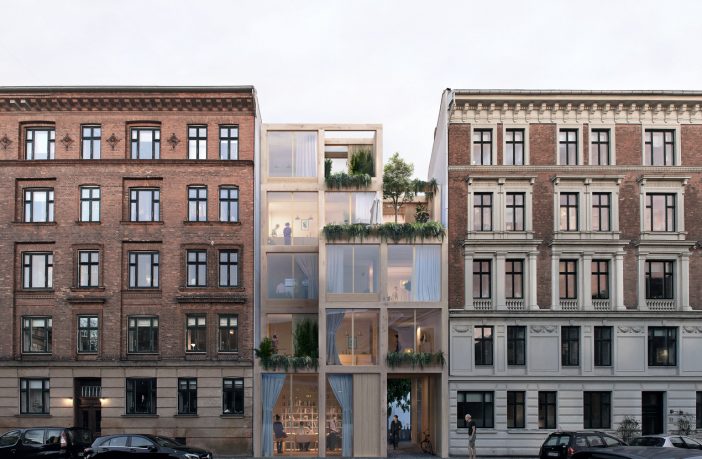The World Economic Forum recently warned that “a world in which only a few can afford housing is not sustainable.” At a time when the future of urbanism is increasingly being defined by new technologies designed to enhance the everyday life of the user, architects and urbanists must remember that a smart city is an accessible city, and also an affordable city. As discussed at the beginning of our monthly study on accessibility, it is important to note that a truly accessible city is one where people of all abilities, incomes, races, genders, and religions, can live and thrive in an urban environment centered on the human experience.
This is not to suggest that technology does not have a role to play. In fact, as we are about to see, both architects and end-users are being exposed to a wide variety of smart innovations to further advance the cause of universal design, from navigating the city for a wheelchair user, to building homes in urban centers for an affordable housing market.
Accessibility
AccessMap – Accessibility for Mobility
Wheelmap – Crowdsourced Accessibility
BlindSquare – Accessibility for the Visually Impaired
While AccessMap and Wheelmap aim to make cities accessible to those with mobility issues, BlindSquare seeks to accomplish the same goal for the visually-impaired. The app uses GPS to locate users, and gathers information about their surroundings. Activated through voice commands, the app helps the blind and visually-impaired to navigate cities, find cafes, and can also be tailored for public transport to highlight next stops and street crossings.
Reading Madrid – Accessible Signage
Cities across the world are embracing accessible signage, with initiatives such as Legible London, WalkNYC, and Rio on Foot. Furthering this trend is Reading Madrid, a combined effort by Applied Wayfinding and local Spanish firms Paisaje Transversal (urban strategy), Avanti Avanti Studio (Design for All), Urban Networks, and Paralelo 39 (urban designers and architects), under the guidance of Dimas García. The project aims to improve legibility, safety, and autonomy in cities through a system of wayfinding cubes, and strategically-placed interactive fixtures. Read more from our in-depth analysis here.
Stretch|Color – Accessibility for Autism Spectrum Disorder
Architect and professor Sean Ahlquist, along with MSU playwright Dionne O’Dell, has created a sensory theater experience for children with autism spectrum disorder (ASD) challenges, designed to enhance the ability of those with ASD to interact with the world around them. Emerging from an initial 2D project titled Stretch|Color, the latest adaption features a 3D developed structure serving as a focal point for a play written by O’Dell. The creators believe it holds new possibilities in the realm of sensory performance, enhancing the user’s experience of schools, museums, and public places throughout cities. Read our article on the project here.
Affordability
PRISM – Housebuilding App
Bryden Wood, Cast, and the Mayor of London have launched a new app to speed up the capital’s homebuilding. The freely-available app, titled PRISM, is aimed at the design and construction of high-quality, factory-built homes to address the current demand of 50,000+ houses per year. London will be the first city in the world to make use of a freely-available app of this kind, sharing precision housing knowledge and leveraging technology to revolutionize the design process. The designers believe that making the app opensource will encourage greater collaboration, and will allow this innovation to be used and further developed by the global community. Read more about the technology from our previous article here.
Vulcan – 3D Printed Housing
3D printing offers tremendous economic and efficiency savings for the future of housing in cities. ICON, a construction company based in Austin, Texas, has recently partnered with New Story, a non-profit focusing on housing, to create a 3D printer that can build houses for $4000. The printer, called the Vulcan, is capable of printing a 650sqft, single-story home out of cement in 12-24 hours. Learn more about the project here, or read our in-depth analysis in 3D printing as a solution to affordability in cities here.
IKEA’s Urban Village Project – Prefabricated Housing
Known for simple, well-designed, flat-pack furniture, IKEA is proposing expanding their DIY-model to a much larger scale: entire city centers. Democratic Design Days is an annual event where IKEAintroduces its upcoming brands and collaborations, this year featuring The Urban Village Project, a collaboration between SPACE10 and EFFEKT Architects. With an overarching goal of improving our quality of life, The Urban Village Project includes a multi-faceted approach. Shared living communities provide a variety of options for different types of families and living situations: from a single person, to a group of roommates, to multi-generational families, the housing is designed to be adaptable within a modular building system. Learn more from our article on the project here.
iBuild – Empowering Self-Builders
IBM Blockchain – Decentralized Building
Author: Niall Patrick Walsh
This article was first published in Arch Daily and is republished with permission.
This article uses information sourced from the United Nations, The World Economic Forum, The World Bank, The Guardian, The Atlantic, and Medium.
















.jpg?1566740625)





